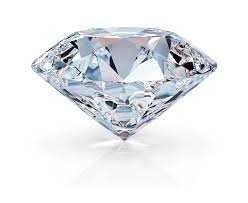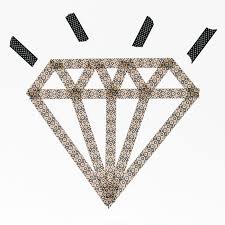 IN THE MID-2000S, diamonds were the hot new thing in material science. It wasn't a direct result of their size, shading, or shimmer, however. These precious stones were monstrous: Researchers would cut them into level squares, millimeters over, until the point that they took after thin shards of glass. At that point they would shoot lasers through them.
IN THE MID-2000S, diamonds were the hot new thing in material science. It wasn't a direct result of their size, shading, or shimmer, however. These precious stones were monstrous: Researchers would cut them into level squares, millimeters over, until the point that they took after thin shards of glass. At that point they would shoot lasers through them.
Presumably the most significant trinket of all was a tiny precious stone mined from the Ural Mountains. "We called it the 'enchantment Russian example,'" says physicist Kai-Mei Fuof the University of Washington. The precious stone was to a great degree unadulterated—all carbon, which isn't regular in this chaotic world—yet with a couple of debasements that gave it abnormal quantum mechanical properties. "It had been slashed up among scholastic gatherings," says Fu, who worked with a piece. "You know, take an etch, chip some off. You needn't bother with much." Those properties were promising—yet the physicists just had a modest bunch of precious stones to ponder, so they couldn't run excessively numerous investigations.
That is not an issue any more. Nowadays, Fu can simply go on the web and purchase a $500 quantum-review jewel for a test—from the organization Element Six, possessed by De Beers. They've long developed manufactured jewels for penetrating and machining, however in 2007, with financing from the European Union, they began making precisely the kind physicists require. What's more, not simply physicists, any more: Today, the supply of manufactured quantum precious stones is abundant to the point that loads of fields are investigating their conceivable employments.
 Component SIX
Component SIX
The main field to profit was quantum registering. Quantum PCs—which hypothetically ought to figure certain undertakings exponentially speedier than consistent PCs—encode data in quantum mechanical properties, for example, turn or polarization. These properties can be extremely unsteady. However, in the event that you encode data inside a precious stone by controlling its debasements with a laser, the diamond's gem structure really secures and protects that data. Physicists are attempting to influence neighboring polluting influences to connect controlledly to execute a crude calculation
Component Six develops these flawlessly blemished precious stones in heaters at about 5,000 degrees Fahrenheit. Beginning with a seed precious stone, the organization's architects pump gases—something carbon-containing, similar to methane, alongside hydrogen and nitrogen—into the heater. As the gas particles warm up, they isolate into single iotas, some of which arrive on the seed precious stone. A couple of decision nitrogen particles sneak in, and the hydrogen keeps the carbon layer developing in the correct precious stone structure. "Carbon wouldn't generally like to be precious stone," says Matthew Markham, a researcher at Element Six. "It truly wants to be graphite."
At Harvard University, material science graduate understudy Jenny Schloss programs Element Six precious stones with lasers and measures how close-by attractive fields meddle. In any case, before she can do that, she needs to foul the precious stones up considerably more.
The precious stones Element Six offers have nitrogen polluting influences—however what Schloss' gathering needs is a gap ideal by it, called a nitrogen opportunity. (Exposure: Schloss is a companion from school.) So they send their jewels to a little New Jersey organization called Prism Gem. The vast majority of its business goes to gems organizations, who request that they make hued precious stones by thumping carbon particles out with light emissions vitality electrons. Be that as it may, physicists can utilize a similar procedure to make more helpful gaps in their examination precious stones.
Crystal Gem will shoot electrons at the precious stones for a considerable length of time—now and again days—to make the correct number of openings. "Commonly, researchers comprehend what specialized particulars they're searching for. They'll send us data on what number of electrons they require per centimeter," says Ashit Gandhi, Prism Gem's central innovation officer. "Adornments is more subjective. They'll request light green, dull green, pink, or whatever." After sitting under the electron shaft, Schloss' precious stone, initially tinted yellow from nitrogen polluting influences, turns light blue.
Her gathering at that point prepares the precious stone once more, which makes the gaps relocate alongside the nitrogen pollutions to make the pined for nitrogen opportunity focus. Its last shading ranges from clear to pink to red, contingent upon what number of debasements they need
With the quantum precious stone store network set up, physicists have possessed the capacity to study and tinker with the diamonds in numerous emphasess of analyses. In any case, it's been a moderate procedure transforming the jewel debasements into associated bits that can register. "The decision is still out," says Fu. "Just two quantum bits [in diamond] have ever been associated. Until the point when things turn out to be more versatile, I don't figure anybody can state it's a clear thing."
Be that as it may, by understanding the precious stones in more detail, scientists have unintentionally thought of another conceivable use for them. Harvard physicists Mikhail Lukin and Ronald Walsworth—Schloss' exploration guide—realized that when hit with a laser, a nitrogen opening precious stone would discharge distinctive measures of light in the event that it was almost a magnet. The jewel could work as a sort of magnetic sensor—one that wasn't as massive as present sensors, which likewise should be cooled to temperatures close outright zero.
So in the mid 2010s, Lukin and Walsworth's exploration group began utilizing the precious stones to think about nerve cells, which transmit attractive fields when invigorated. They began with a squid nerve cell, thicker than a human hair. Graduate understudy Matthew Turner set out to Woods Hole Marine Biological Laboratory, where he extracted long, thin white neurons from crisp squid, put them on ice, and hopped on a transport back to the lab to quantify its attractive field under electric incitement.
Afterward, the group changed to examining neurons in marine worms, which they could keep in a tank in the lab. About a year prior, they published a paper on the affectability of their jewels to ponder those neurons. Presently, they're utilizing the precious stones to examine attractive fields emitted by human heart cells.
They're additionally teaming up straightforwardly with Element Six. As an end-result of give cash, the organization sends them jewels. As of late, the organization sent them a round plate the span of a treat, with four precious stones installed in it—planned to keep one jewel from warming up excessively when hit by an effective laser. "I don't know why there are four jewels," says Schloss. "We haven't discovered a decent use for it."
Component Six is the essential provider of quantum-review precious stones. "At the present time, if it's not a restraining infrastructure, it's a close imposing business model, particularly regarding access," says Fu. Schloss and Turner's lab has bought poorer quality precious stones from eBay for preparatory tests, yet they haven't functioned admirably.
Meanwhile, physicists are working not simply on their trials, but rather on driving this new innovation forward. The Harvard lab has just spun off a little organization, Quantum Diamond Technologies, to create jewel based imaging gadgets for restorative diagnostics.
In the long run, they're seeking the jewels may be valuable after imaging inside the qhuman cerebrum, neuron by neuron, something that neuroscientists have yet been not able do. Or on the other hand perhaps, utilized as a part of conjunction with different advancements, it'll light up another edge of the neuroscience bewilder. "I don't claim to be the best neuroscientist or to have the best apparatus," says Turner. "This is only an alternate device that I need to see better." They don't have a clue about what's straightaway, yet perhaps that improves for science.
Wow owsam diamonds If I got it I will be rich.
The prominent Nirav Modi case has turned the focus on the multi-billion exchange now, yet this business has been on the radar of insight offices for quite a while.
Alarms were conveyed as right on time as 2013. The Directorate of Revenue Intelligence (DRI) had broken an instance of a jewel dealer who had utilized a manufactured bill of section and got a letter of credit encashed in Hong Kong. Noticing a bigger issue, the DRI at that point composed an itemized note to the national bank, hailing the case.
It appeared that the usual way of doing things was very mainstream in the precious stone exchange, and the DRI soon ended up managing a greater case in Mumbai in 2014.
By then the new government drove by Narendra Modi was set up with containing dark cash as one of its key plans. The DRI again took up the issue with the RBI this time, as well as with the Special Investigation Team on dark cash, Financial Intelligence Unit, Enforcement Directorate and the business and industry service.
"There was gross abuse of providers' credit and purchasers credit standards ... This was hailed with the concerned experts including the national bank ... Various precious stone merchants were observed to abuse it," said an official aware of the correspondence the organization had conveyed. This credit, given for 270 days, was recycled with follow-up paper work.
DRI had suspected the managing an account framework to be vulnerable to the usual way of doing things utilized by some in the precious stone exchange — produced bill of passage or utilization of one bill of section in various bank offices to get the letter of credit encashed. A bill of passage gives subtle elements of the genuine shipment of imported merchandise.
The RBI did not react to ET's questions. Be that as it may, a source said the national bank took measures to fix the system following the DRI correspondence
You got a 3.13% upvote from @getboost courtesy of @jara.mehjabin!
Peace, Abundance, and Liberty Network (PALnet) Discord Channel. It's a completely public and open space to all members of the Steemit community who voluntarily choose to be there.Congratulations! This post has been upvoted from the communal account, @minnowsupport, by zerin.tahmid from the Minnow Support Project. It's a witness project run by aggroed, ausbitbank, teamsteem, theprophet0, someguy123, neoxian, followbtcnews, and netuoso. The goal is to help Steemit grow by supporting Minnows. Please find us at the
If you would like to delegate to the Minnow Support Project you can do so by clicking on the following links: 50SP, 100SP, 250SP, 500SP, 1000SP, 5000SP.
Be sure to leave at least 50SP undelegated on your account.